London in the 1960s was a city reborn, humming with energy and reinvention. The streets teemed with miniskirts, mod fashion, and a soundtrack that defined a generation. The Beatles stood at the epicenter, reshaping popular culture with every record. Music wasn’t just background noise — it was revolution, echoing from pubs to palaces, from radios to riots. Amid this cultural explosion, a young model named Pattie Boyd would step into the limelight, unaware she would become the face — and heart — of rock’s greatest drama. What began as a fairy tale marriage would spiral into betrayal, obsession, and three of the most famous love songs in music history.
The Swinging Sixties
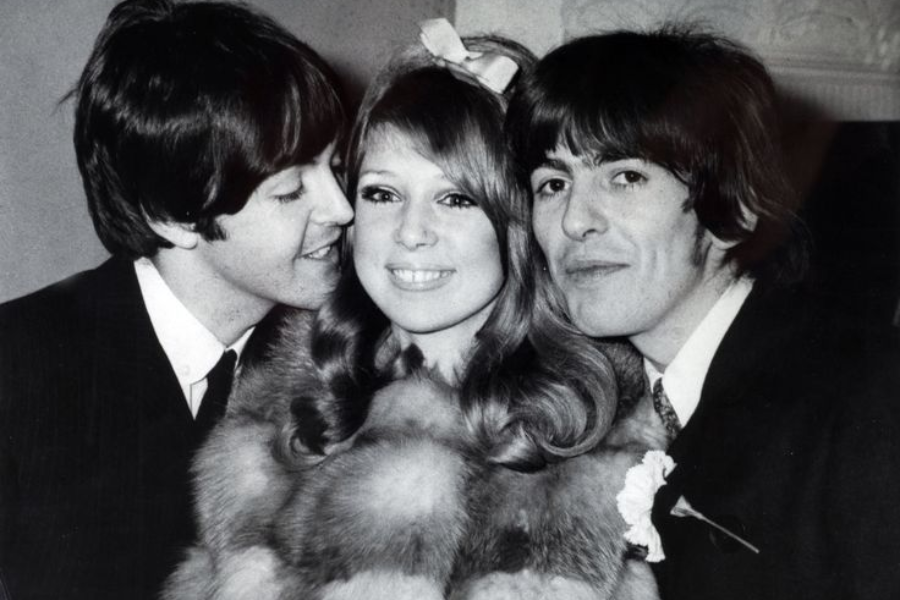
Pattie Boyd was more than just a pretty face of the 1960s. Born in Taunton in 1944 and raised in Devon, England, her childhood was not that glamorous, shaped by divorce, restlessness, and frequent moves.
Naturally shy, she carried a warmth that drew people close. In her late teens, she worked briefly as a shampoo girl before being encouraged into modeling, where her beauty quickly caught attention.
By 1964, she was working with photographers David Bailey and Terence Donovan. That February, The Beatles conquered America on The Ed Sullivan Show. One month later, Pattie’s agent sent her to audition for A Hard Day’s Night — a moment that would change everything.
Meeting Pattie Boyd
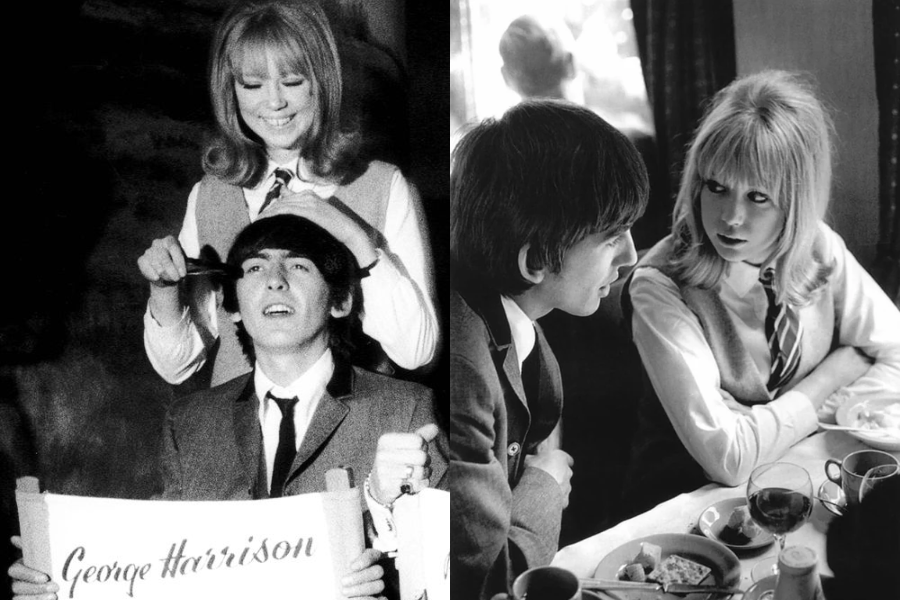
On the set of A Hard Day’s Night, chaos swirled — camera crews, screaming fans, and Beatles fever at its peak. George Harrison spotted her: a young blonde with striking innocence.
Pattie, then 20 years old, was cast as a schoolgirl extra. She wasn’t pursuing the Beatles, nor did she expect to catch one’s eye. Yet George found himself instantly transfixed.
As filming continued, George’s gaze often wandered in her direction. In that moment, amid the noise of Beatlemania, he felt something rare — and decided he had to know her.
Pattie’s Rise in London
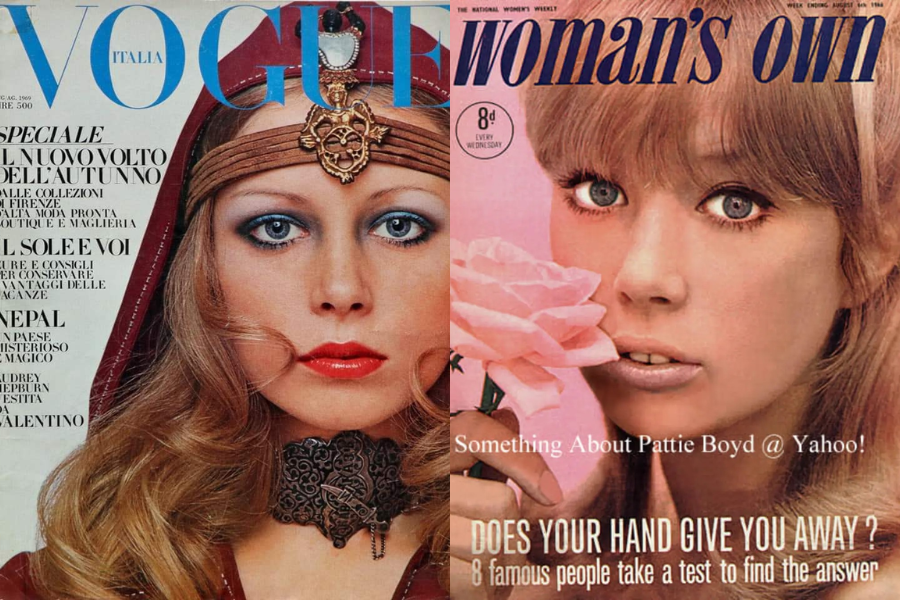
Pattie Boyd’s ascent had already begun before George. In 1962, she was discovered by a talent scout and swiftly became one of London’s sought-after faces, embodying youth, innocence, and modern chic.
By 1963, her photographs filled fashion magazines like Honey and Vogue. She posed for Mary Quant, the designer of the miniskirt, and became part of Britain’s booming “youthquake” culture. Fashion editors adored her, and designers clamored to have Pattie wearing their latest creations.
Stylish yet approachable, she reflected the very spirit of the Swinging Sixties. Little did she know, the same qualities that made her fashion’s darling would soon make her rock’s ultimate muse.
Love Blossoms
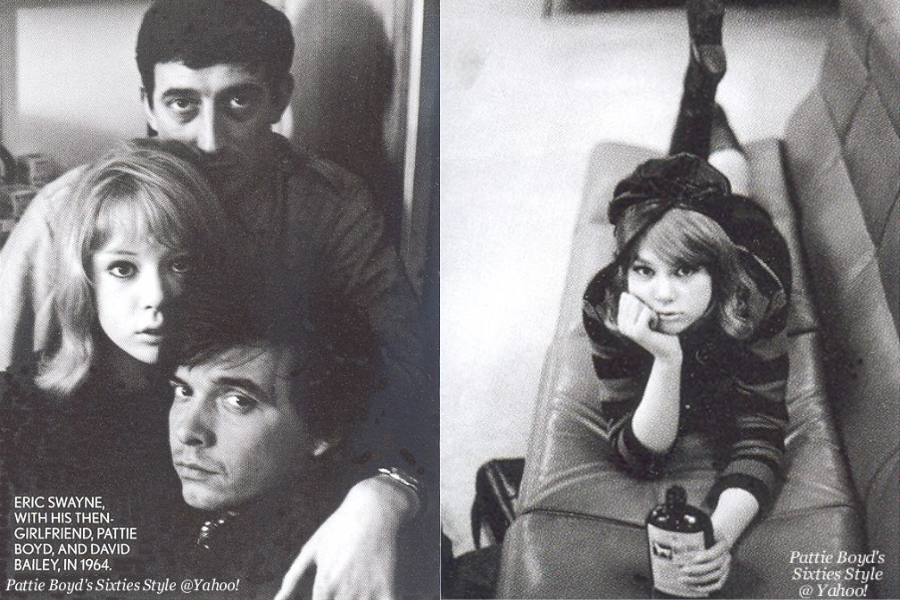
George finally gathered courage to approach Pattie between takes. His quiet nature contrasted sharply with John Lennon’s boldness or Paul McCartney’s charm, but sincerity carried its own gravity. He invited her out to dinner. To his surprise, she declined.
At the time, she was dating photographer Eric Swayne and wasn’t sure about entangling herself with a Beatle. Yet George’s persistence and sincerity began to wear down her hesitation.
By August 1964, their conversations stretched beyond film sets. Amid the maelstrom of Beatlemania, George and Pattie discovered something private, fragile, and real — though fame would soon test it.
A Beatle in Love
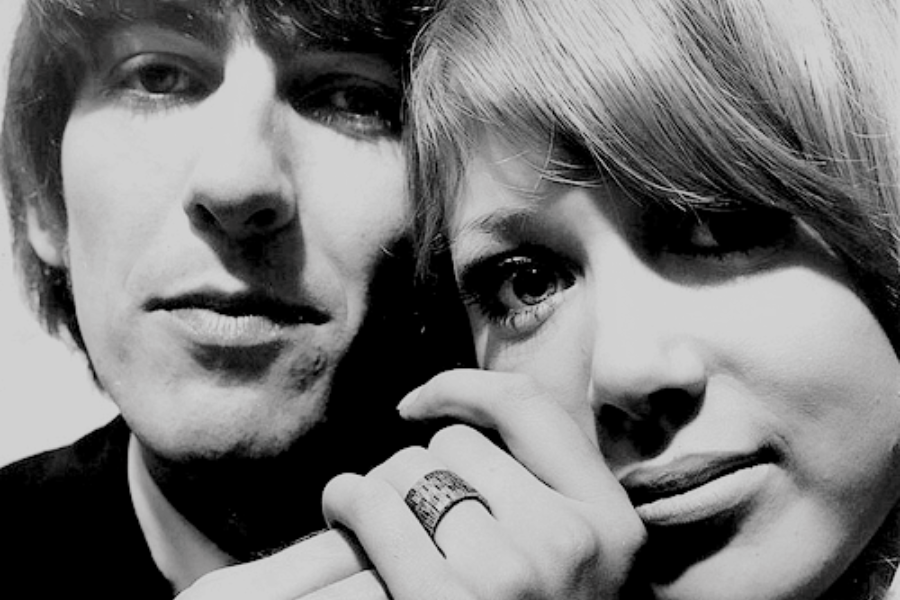
By late 1965, George Harrison knew he wanted Pattie by his side permanently. He proposed to her twice before she finally accepted — his quiet persistence finally overcoming her hesitation.
On January 2, 1966, George presented Pattie with a gold ring set with a large solitaire diamond. For Pattie, it symbolized not just love, but the surreal reality of Beatle life.
Their engagement marked a turning point. Pattie wasn’t just dating a Beatle anymore; she was stepping into the glare of the world’s obsession. And the wedding would seal that fate.
The Fairy Tale Wedding
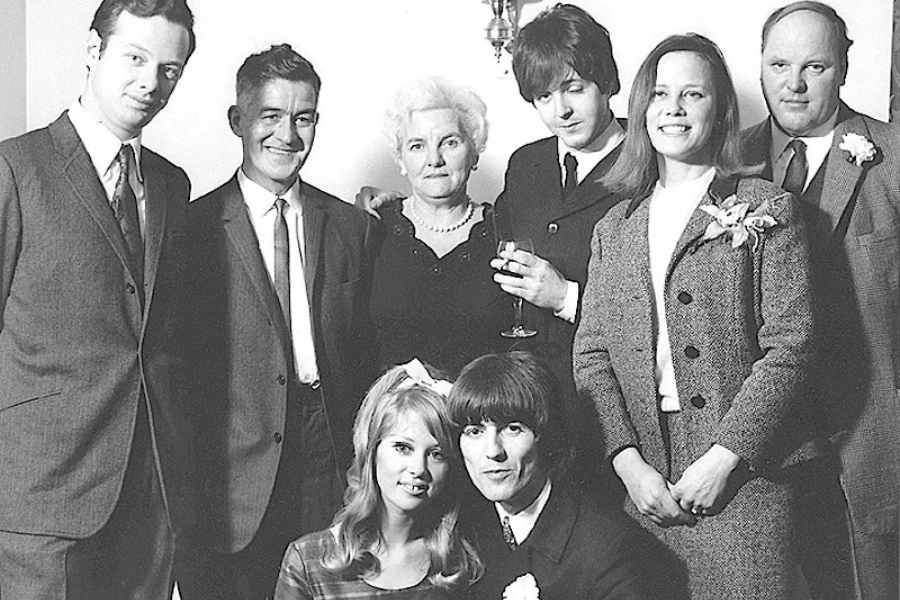
On January 21, 1966, George Harrison and Pattie Boyd were married at Epsom Register Office in Surrey. Fans gathered outside, clutching flowers, desperate for a glimpse of the new Beatle bride.
The ceremony was modest by design — George disliked spectacle. Only a handful of guests attended, including Paul McCartney as best man. For Pattie, it felt intimate, almost strangely ordinary.
Yet photographs of the newlyweds instantly spread worldwide. To the public, it was a fairy tale: the Beatle and the model, perfection personified. But behind closed doors, reality was less simple. Especially when George crossed paths with a fellow musician who would soon find himself under Pattie’s spell.
Brothers in Music
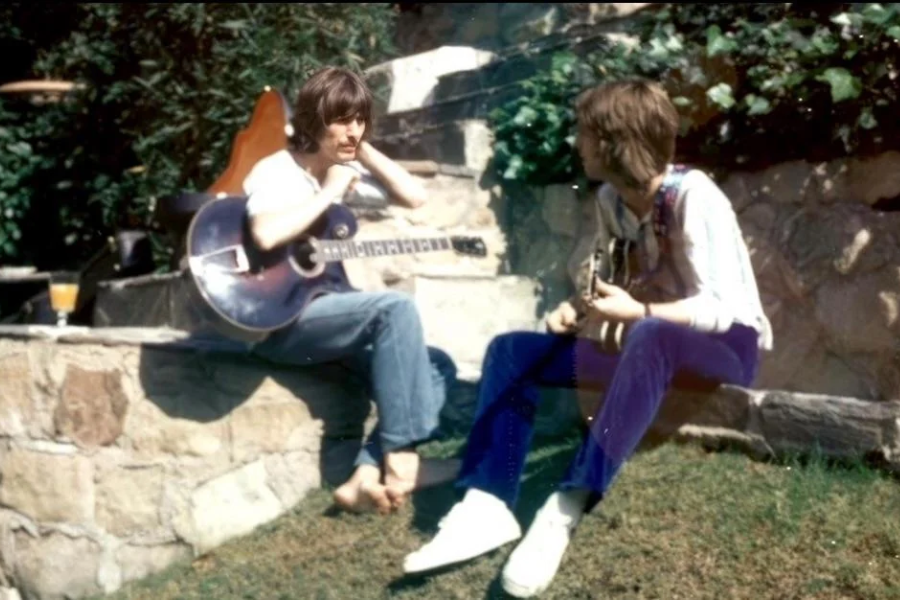
George Harrison and Eric Clapton first connected through music, drawn together by their mutual love of the guitar. Unlike many friendships in rock, theirs wasn’t built on rivalry — but brotherhood.
They jammed endlessly, trading riffs, teaching each other licks, and marveling at each other’s tone. When Eric joined The Beatles on While My Guitar Gently Weeps in 1968, it cemented their bond.
George often said Eric was one of the few musicians he admired without reservation. But admiration carried a hidden irony: his closest friend would one day covet his greatest treasure.
A Bond Forged in Harmony
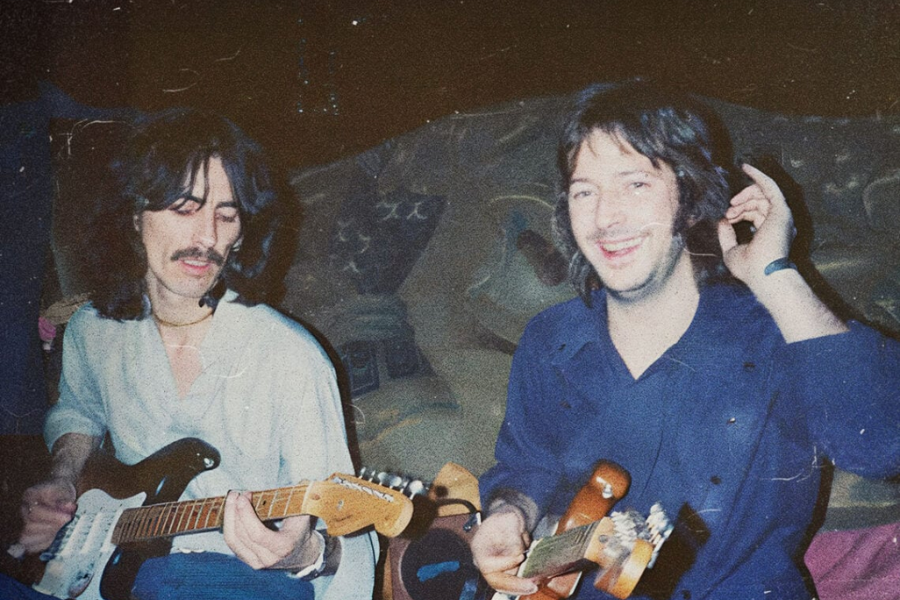
When George and Eric gathered with guitars, barriers dissolved. They spent nights trading melodies, losing themselves in music, each man finding in the other both student and teacher.
Their bond extended beyond music. They visited each other’s homes, shared confidences, and leaned on their friendship during the turbulence of fame. To outsiders, their loyalty seemed unshakable.
Yet music was only half their story. In the spaces between riffs and rehearsals, Eric noticed George’s wife. Admiration turned to obsession, setting the stage for betrayal that would scar them both.
Inside the Harrison Household
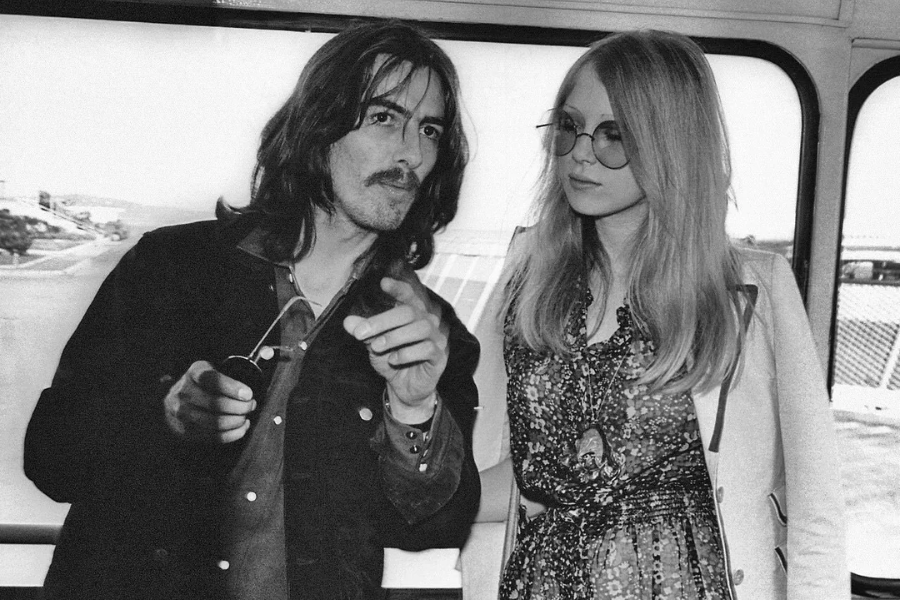
From the outside, George and Pattie lived a dream. Their home, Kinfauns — a bungalow in Esher, Surrey — was a psychedelic haven — walls painted with swirling colors, parties filled with stars, and music everywhere.
But fame had its cost. George’s schedule was relentless, and privacy was almost impossible. Pattie, once a vibrant model, often found herself isolated, waiting for a husband consumed by Beatlemania.
Even during this turbulent time, Pattie often turned to her camera. She photographed George, The Beatles, and their travels, capturing candid moments. What began as a quiet hobby would later become her own artistic identity.
The Trip
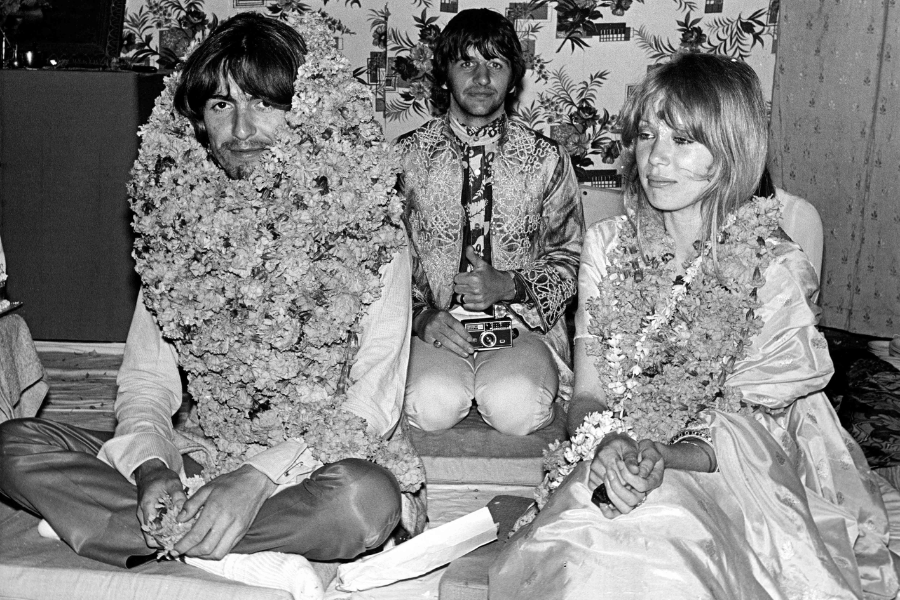
In 1968, George and Pattie traveled to the Maharishi Mahesh Yogi’s ashram in Rishikesh, India, alongside the other Beatles. For George, meditation became an all-consuming obsession, overtaking everything else.
When they returned, George withdrew further, often spending hours in silent practice, detached from Pattie. His absences were no longer only physical — they were emotional, deepening the distance between them.
Pattie later admitted her despair ran so deep she imagined suicide. She pictured herself in a flowing Ossie Clark dress, leaping from Beachy Head. The fairy tale had darkened.
George’s Krishna Fantasy
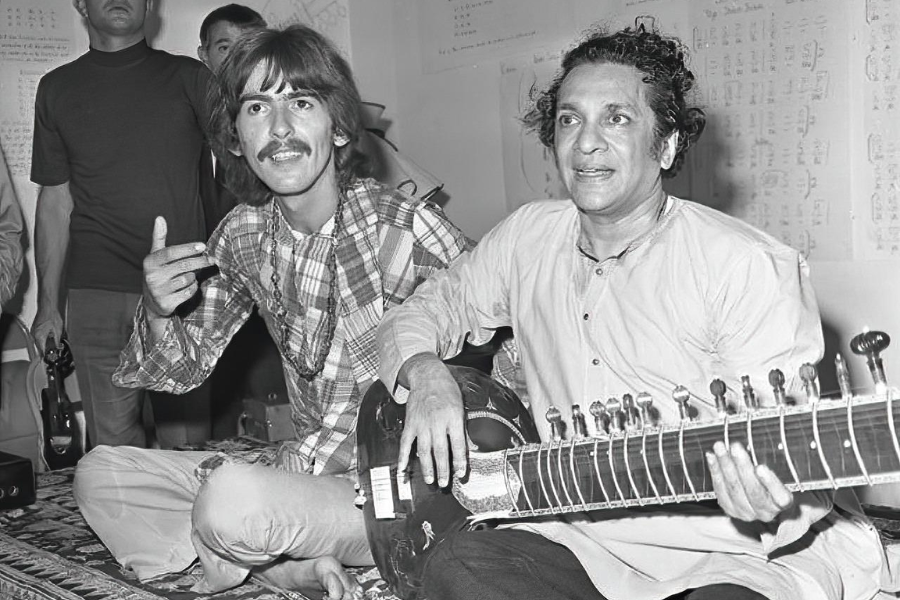
Pattie soon discovered that George’s spiritual devotion carried darker undertones. His fascination with Krishna — the deity always surrounded by maidens — began to shape his desires back home in troubling ways.
Returning from India, George spoke openly about wanting to live as a Krishna figure, a man with multiple women orbiting him. For Pattie, the declaration was humiliating, devastating.
Affairs followed, each one cutting her deeper. Pattie felt herself unraveling, wounded not only by George’s distance but also by his unapologetic pursuit of other women in their marriage.
Pattie’s Struggle in the Shadow
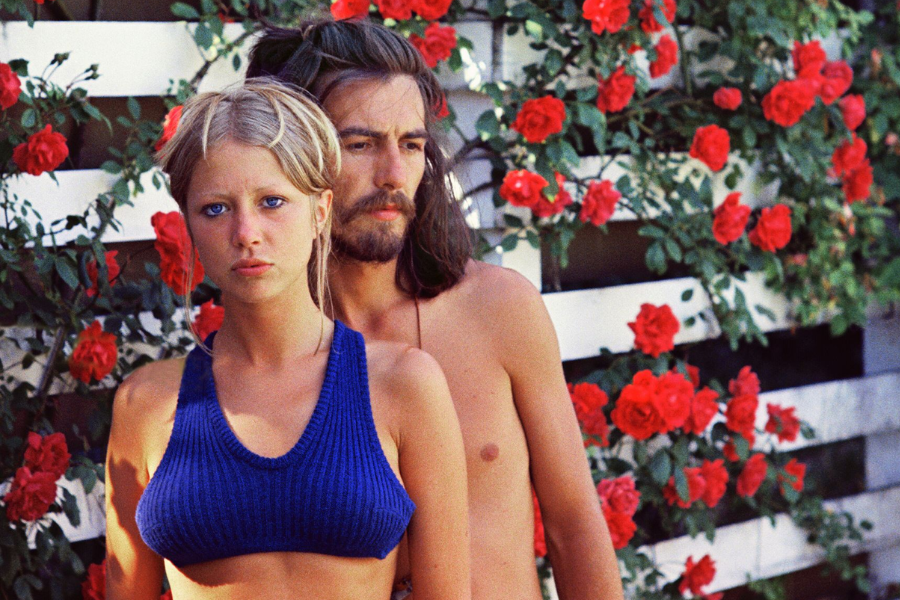
Pattie’s life became a paradox. To the world, she was enviable — the stylish wife of a Beatle. Behind closed doors, she often felt like a lonely spectator in her own marriage.
She watched George withdraw into his music, his spirituality, and eventually his affairs. Though surrounded by luxury, Pattie described her world as suffocating, her role reduced to waiting.
Every magazine cover painted her as blessed. In truth, she felt trapped in a golden cage. And George unaware of the cracks in their relationship, expressed his love through a song. That song would become one of the most famous love letters in music history.
Writing “Something” for Pattie
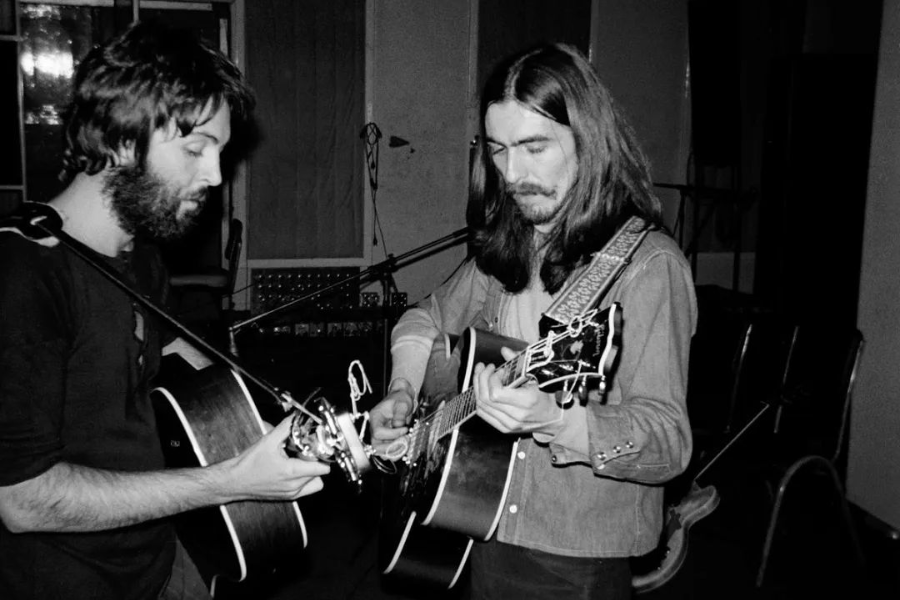
Amid the turmoil, George found his own form of expression. In 1968, he began writing “Something,” a ballad that would stand as his purest declaration of love for Pattie.
Released on Abbey Road in 1969, the song’s gentle melody cut through the Beatles’ experimentation. “Something in the way she moves attracts me like no other lover,” George sang, a direct tribute to Pattie’s quiet charm.
It was his devotion translated into music. Yet lines such as “You’re asking me will my love grow, I don’t know, I don’t know” hinted unconsciously at doubts. For Pattie, it was a bittersweet reminder of what they once had. And For Sinatra? The legendary singer gave his opinion the first time he heard it.
Sinatra’s Praise
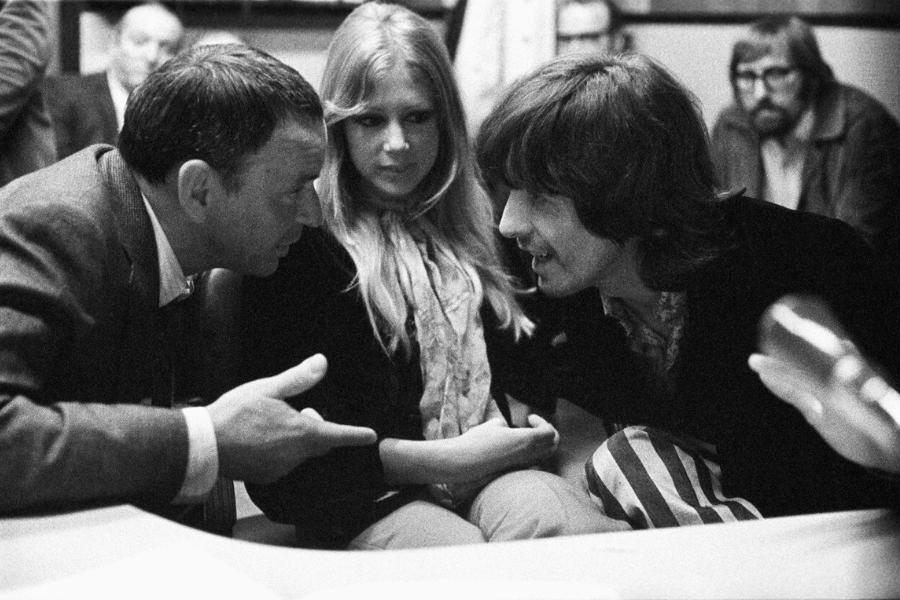
“The greatest love song ever written,” confessed Sinatra, who began performing Something in his own concerts. Coming from the Chairman of the Board, the compliment carried weight.
Sinatra’s renditions introduced the song to an entirely different audience, beyond rock fans. For many, it became the standard of romantic devotion, its lyrics etched into weddings and declarations of love.
Yet for Pattie, hearing it was complicated. The world swooned at George’s words, but she knew the distance at home. Public devotion clashed with private detachment, deepening her inner ache. And in that emptiness, she would soon encounter someone else’s dangerous devotion.
Clapton’s First Glances
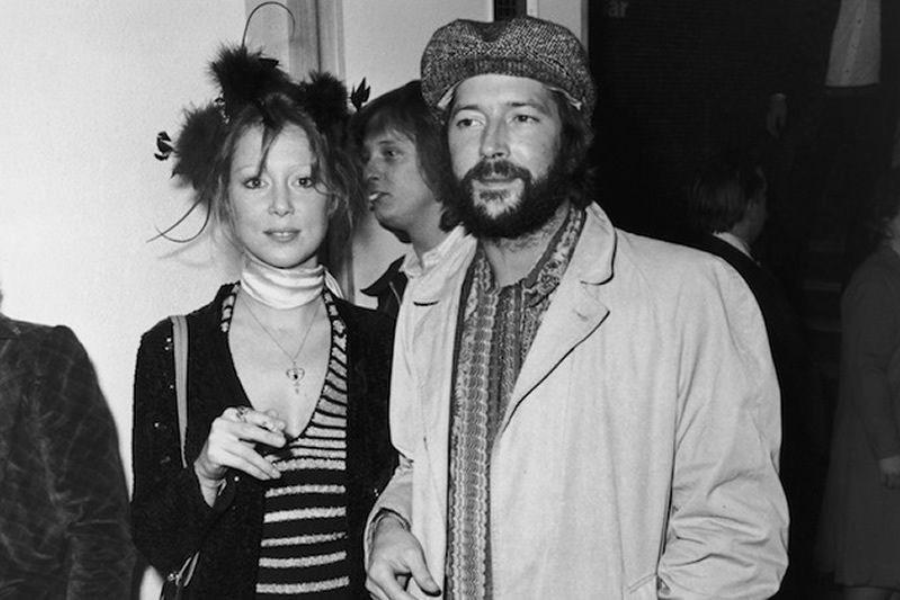
Eric Clapton had always admired Pattie from afar. She seemed luminous yet fragile, an untouchable figure at George’s side. At first, his feelings were hidden behind the mask of friendship.
“It was hard not to be flattered when I caught him staring at me or when he chose to sit beside me,” Patti recalled. He complimented what she was wearing, the food she had cooked, and he said things he knew would make her laugh. What George took for granted, Eric worshipped.
Soon, admiration blurred into desire. Pattie became more than George’s wife in his eyes — she was the muse he longed for, though pursuing her meant betraying his closest friend.
A Dangerous Detour
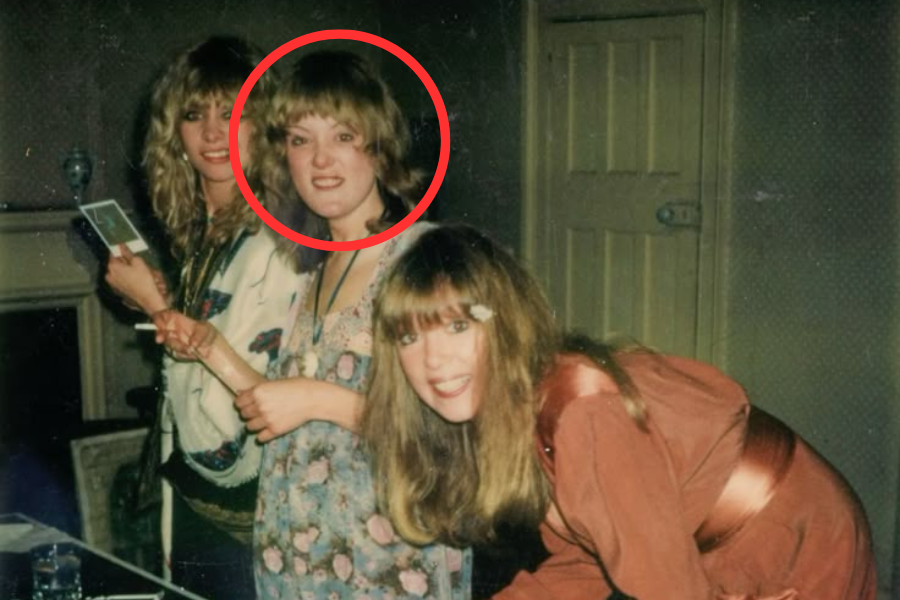
In December 1969, Pattie brought her 17-year-old sister Paula to watch Eric perform in Liverpool. Paula, striking and free-spirited, caught his attention almost instantly during the after-show celebrations.
The next night in Croydon, another wild party followed. This time at Eric’s home, Hurtwood Edge, Paula stayed behind. Before long, she had moved in with him entirely.
But the relationship was hollow. Eric dated Paula as a diversion, a misguided attempt to curb his growing obsession with Pattie. When it failed, his desperation peaked — giving birth to another enchanting love anthem, one that defined heartbreak for an entire generation.
The Secret Hearing
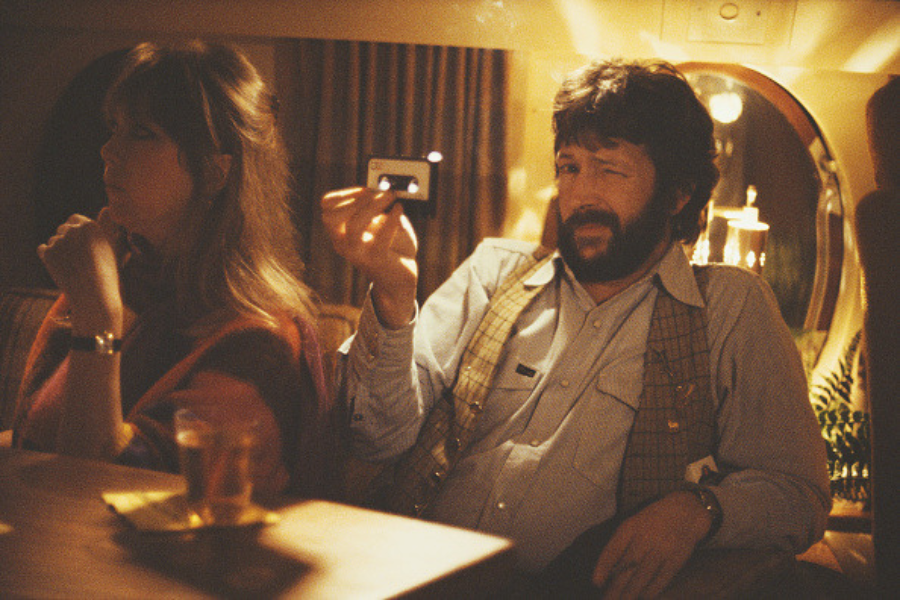
Pattie agreed to meet Eric in secret at a flat in South Kensington. He said he had written something important — a song he wanted her to hear.
He switched on the tape machine, turned up the volume, and unleashed his masterpiece. “Like a fool, I fell in love with you. You turned my whole world upside down,” Layla roared through the room — a cry of obsession, longing, and despair disguised as rock.
Eric played it again and again — “Make the best of the situation, ’fore I finally go insane” — his eyes locked on Pattie. Her heart pounded. Oh God, she thought, everyone will know this is about me.
The Story of Layla
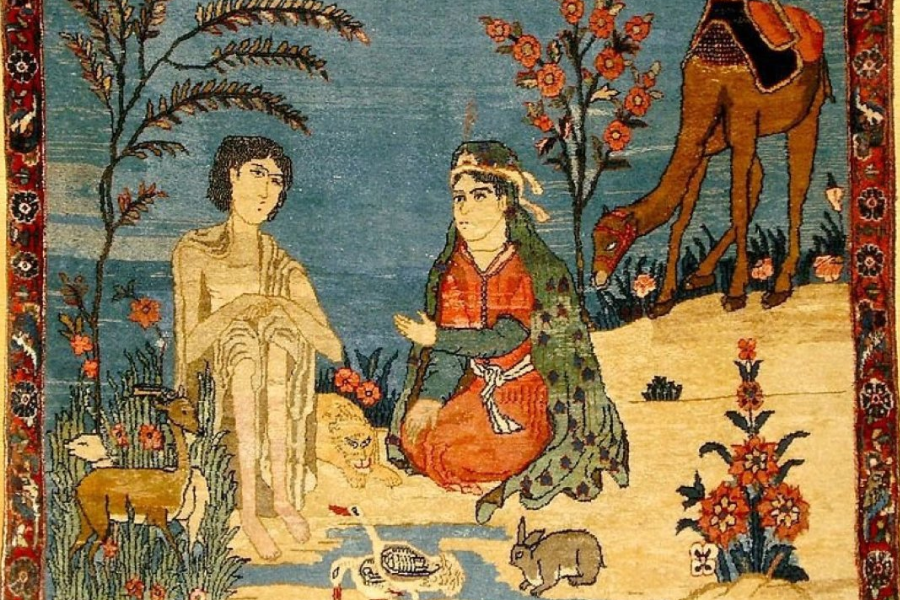
Unable to voice his longing outright, Eric turned to the only language he trusted — music. His heartbreak found shape in fiery guitar riffs and anguished lyrics, raw with desperation.
Inspired by the Persian tale of Layla and Majnun, the story of forbidden love that drives a man to madness, Eric saw his own torment reflected perfectly in its tragedy.
By 1970, Derek and the Dominos released Layla and Other Assorted Love Songs. Every note screamed his passion for Pattie. But there’s always an end to secrets.
Robert Stigwood’s Party
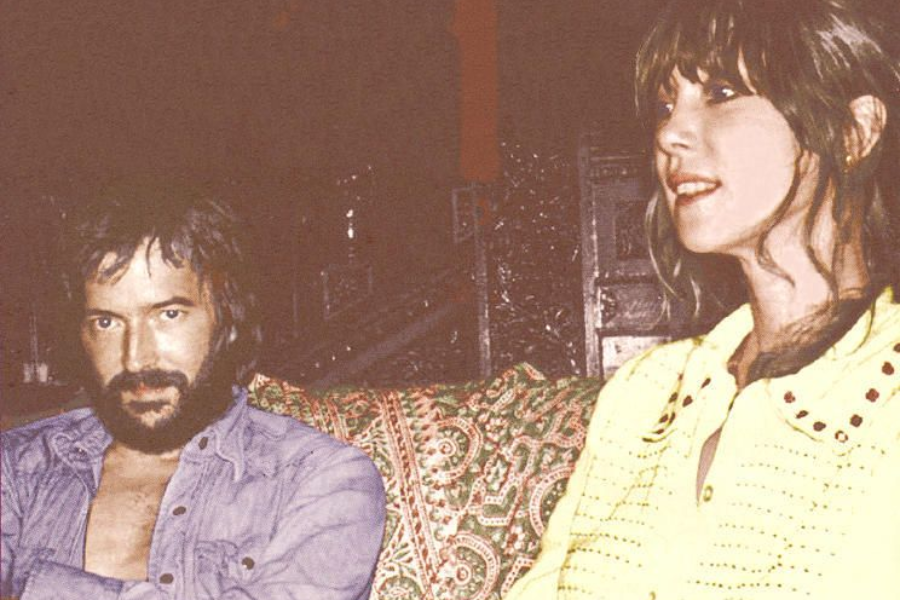
Only months after hearing Layla in secret, Pattie went to see Oh! Calcutta! with a friend before heading to a party at Robert Stigwood’s house. George refused to accompany her that evening.
During the interval, she returned to her seat to find Eric Clapton beside her, having persuaded a stranger to swap places. After the show, they went separately to the party.
There, Eric and Pattie gravitated together again. The thrill of their growing intimacy clashed with Pattie’s sense of guilt. The night felt intoxicating — but the morning would bring reckoning.
The Ultimatum
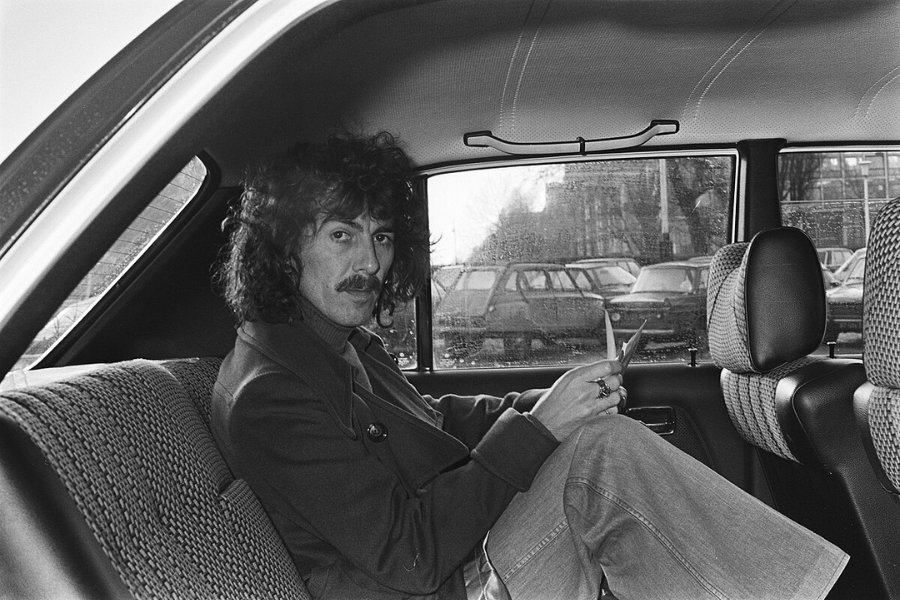
George arrived at the party in the early hours, gloomy and out of place among guests high on drink and drugs. He kept asking, “Where’s Pattie?” but no one seemed to know.
As dawn broke and mist spread across the garden, George spotted Pattie with Eric. Approaching them, he demanded an explanation, his voice sharp with suspicion and hurt.
To Pattie’s horror, Eric confessed: “I have to tell you, man, that I’m in love with your wife.” George turned to her, furious, and issued an ultimatum: “Are you going with him or coming with me?” She hesitated only a moment before walking back into the mist — at George’s side.
Clapton’s Obsession Deepens
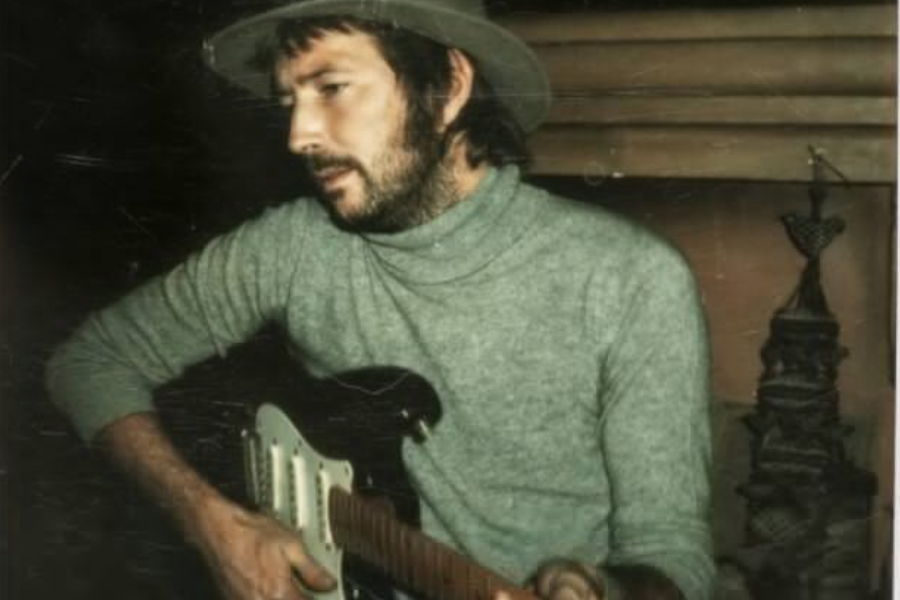
Eric’s fixation on Pattie consumed him. Friends noticed how often he spoke her name, how his eyes lingered whenever she entered a room. It was no secret.
He poured himself into music. His devotion turned desperate — a passion so intense it threatened his sanity and the friendship he valued most.
For Pattie, Eric’s attention was both flattering and frightening. George’s neglect left her vulnerable, and Eric’s obsession made her feel seen. But the cost of surrender was unthinkable.
A Strange Letter
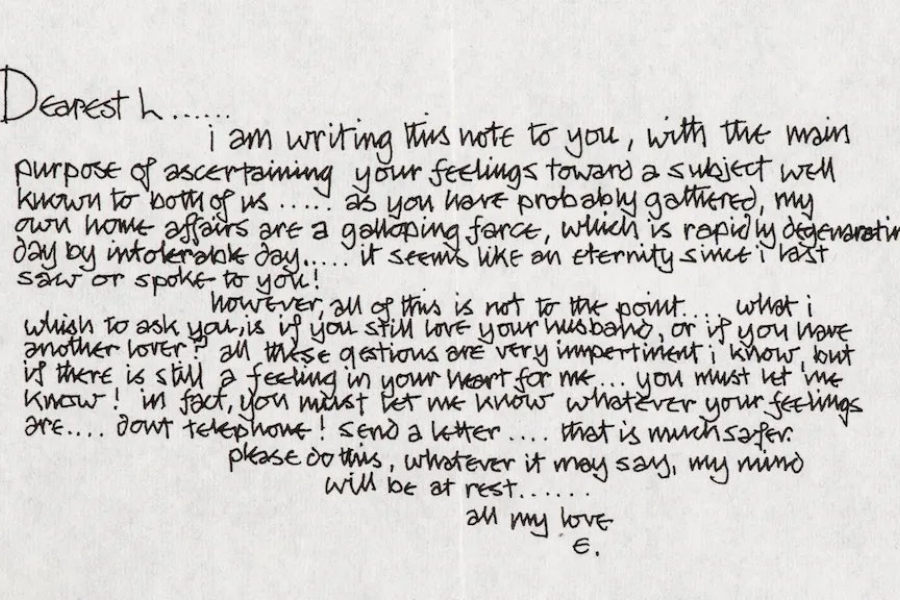
George and Pattie moved into Friar Park in 1970, a sprawling Victorian Gothic estate near Henley-on-Thames. With 25 bedrooms, ballrooms, and vast gardens, it symbolized grandeur and new beginnings.
Shortly after moving in, a peculiar envelope arrived for Pattie. Marked “express” and “urgent,” it contained a small, neatly written note in small letters: “it seems like an eternity since i last saw or spoke to you!” Tender, aching, and unsettling in its intimacy.
The writer, signed only as “all my love, e.,” spoke of failing home affairs and begged to know her feelings. Was she still loyal to George, or did her heart belong elsewhere?
“Did You Get My Letter?”
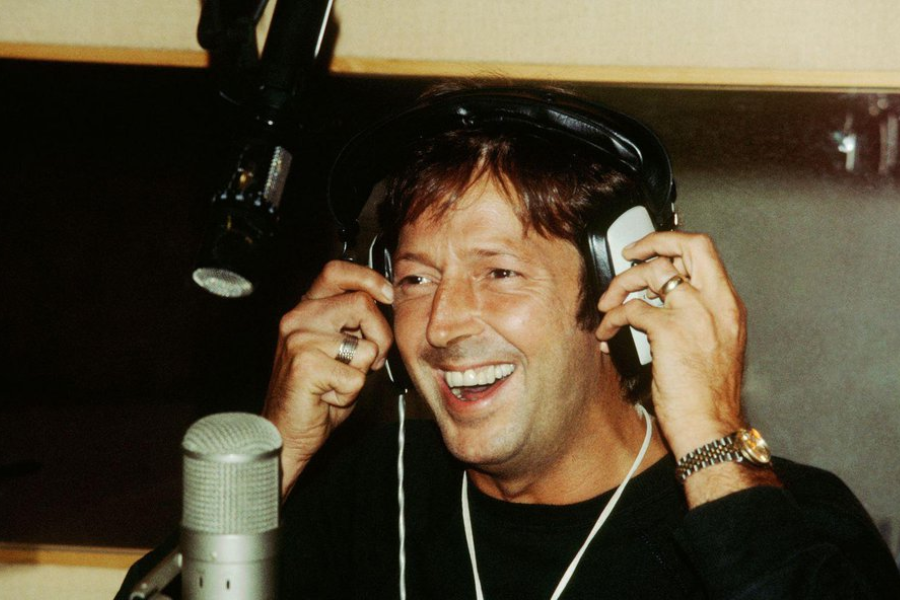
At first, Pattie dismissed the note as fan mail, even showing it to George and friends, who laughed it off. Its delicate handwriting felt too strange, almost anonymous.
But that evening, the phone rang. Eric Clapton’s voice emerged on the line, trembling yet resolute. “Did you get my letter?” he asked, shattering any illusion of coincidence.
The realization floored her. What she thought was a curiosity from a stranger was, in truth, a love declaration from her husband’s closest friend. Nothing between them would be the same again.
Torn Between Loyalty and Temptation
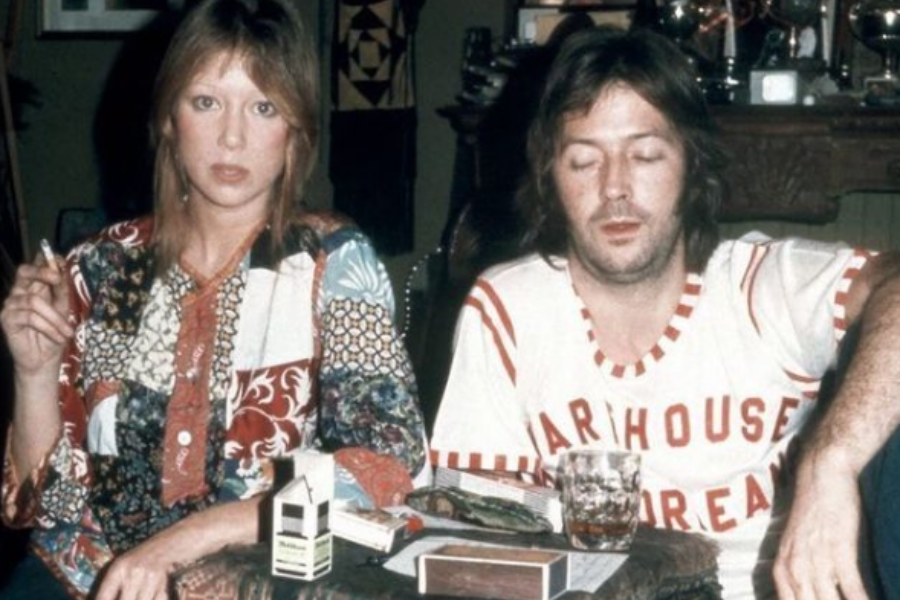
Eric’s letter and phone call unsettled Pattie deeply. George was distant, distracted by music and affairs, while Eric’s obsession made her feel wanted again. She stood at a dangerous crossroads.
Every encounter with Eric carried weight. His eyes lingered longer, his words dripped with longing, and Pattie felt herself drawn into his intensity despite knowing the destruction it promised.
In a recent interview with Christie’s (February 2024), Pattie recalled, “Eric keeps coming over to our house asking me to run away with him. Well, that was tempting, but I couldn’t do it. It just wasn’t right.” Patti chose loyalty to George. But her refusal broke Eric.
A Page Torn
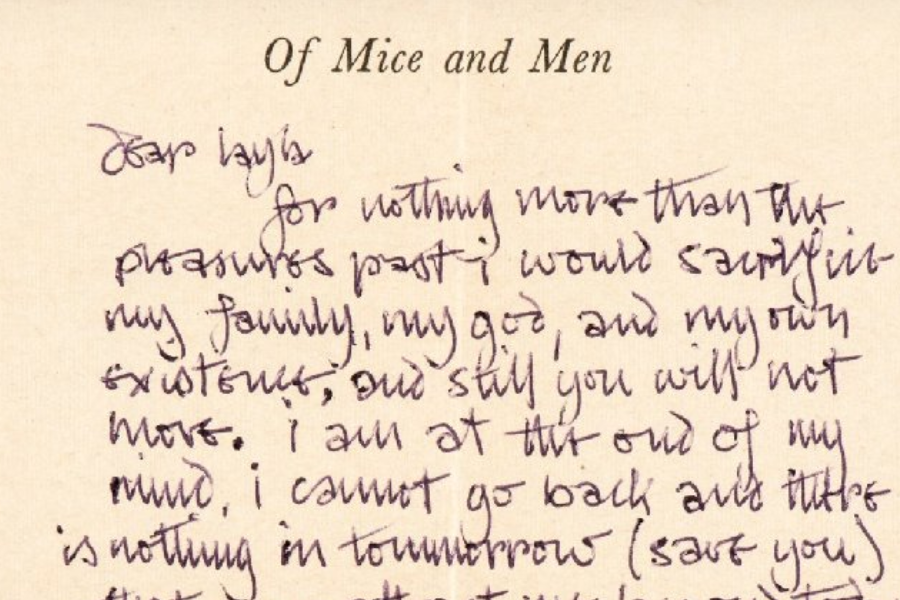
After withdrawing from public life, he plunged further into heroin addiction, isolating himself for years, consumed by the love he couldn’t have. But Eric’s pursuit of Pattie continued at a distance.
In January 1971, he wrote from a Welsh cottage. He had no paper, so he tore a page from Of Mice and Men and scrawled an anguished note. Its opening lines addressed her as “dear layla” and pleaded.
He begged he’d sacrifice everything: his family, God, and his own existence — “for nothing more than the pleasure past,” and urged her to “break the spell” if she doesn’t want him because “to cage a wild animal is a sin, to tame him is divine.”
Silent Duels and Breaking Vows
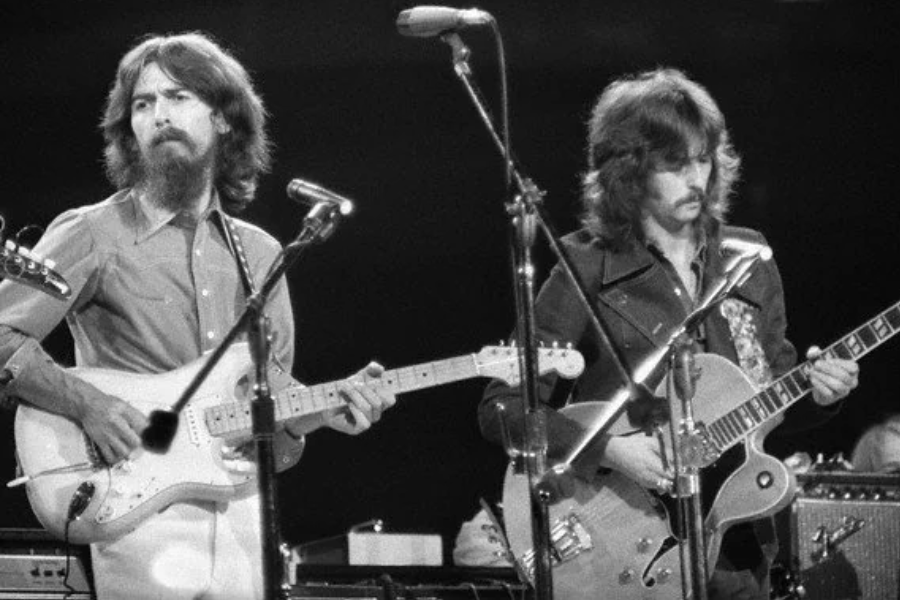
For nearly four years, Pattie Boyd scarcely saw Eric Clapton, except during his appearance at George Harrison’s Concert for Bangladesh in August 1971, and later his comeback at London’s Rainbow Theatre in January 1973.
One night, soon after, Eric appeared at Friar Park. In the entrance hall, George had laid out two electric guitars like dueling swords. For two hours, the men played, battling for Pattie’s heart with their tunes.
The air was thick with tension. Music became the weapon neither could sheath. By the end, nothing was resolved, but Pattie understood: her life had become the prize in a private war.
Fractured Romance
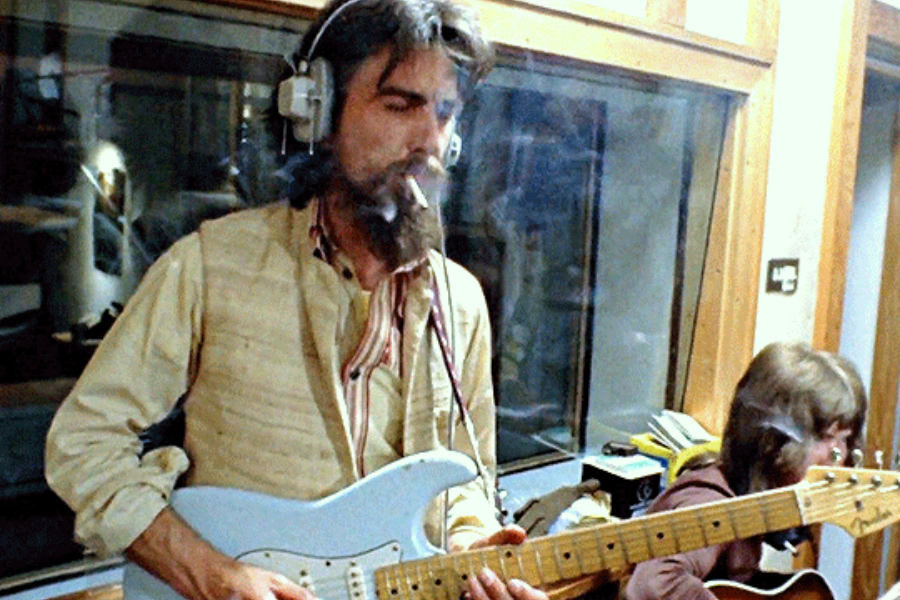
By then, Pattie’s marriage was fracturing. George Harrison was spiraling further into mysticism and indulgence. His spiritual pursuits often left Pattie excluded, while long nights and heavy drug use widened the emotional distance between them.
Cocaine only deepened his erratic moods. Since The Beatles’ breakup, his increasing dependence had fueled sharp temper swings, making life at Friar Park unstable and nearly impossible for Pattie to navigate peacefully.
Though she admits she would’ve stayed with him, the affairs became impossible to ignore. Pattie discovered George was involved with Ringo Starr’s wife, Maureen, later with Krissy Wood, the wife of Ronnie Wood, and even with a woman Eric had once dated.
Into Clapton’s Arms
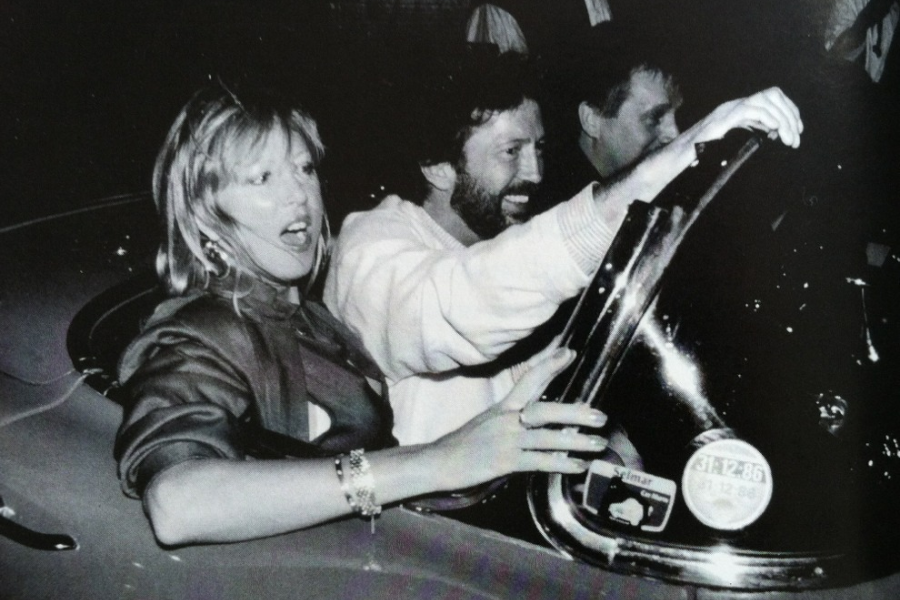
By late 1974, Pattie walked away and ended things with George. She described it as a “ludicrous and hateful life” that year, and George was being a different George.
Only weeks after finalizing her divorce, Pattie entered into a relationship with Eric Clapton, whose devotion had long been an open secret. After years of yearning and pursuit, he had finally won the woman he desired.
At first, their connection felt like destiny. Eric’s passion promised the attention and adoration George had denied her. And Layla wasn’t enough to express that.
Clapton’s Tender Ballad
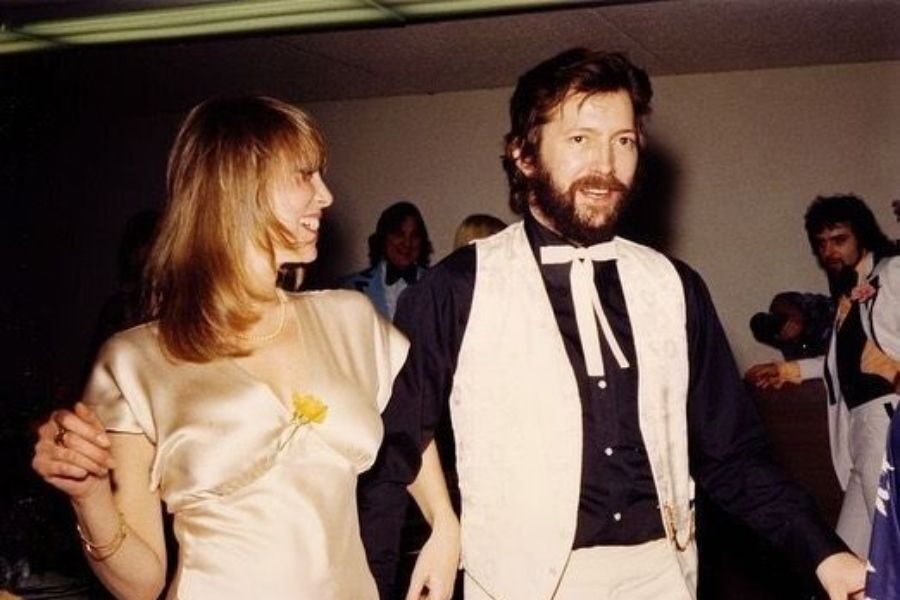
By 1977, Eric Clapton had already turned his torment over Pattie Boyd into the fiery passion of Layla. But in Wonderful Tonight, he revealed a gentler, more vulnerable side of his devotion.
He wrote the song while waiting for Pattie to get ready for Paul and Linda McCartney’s annual Buddy Holly party. Watching her dress, Clapton transformed a simple moment into timeless tenderness: “Oh my darling, you are wonderful tonight.”
Billboard later described it as “perhaps Clapton’s prettiest and mellowest love ballad.” For Pattie, it became a rare gift: a song of quiet admiration rather than obsession or anguish. Just when everything seemed like a second chance at love, the shadows started to linger.
Passion and Possession
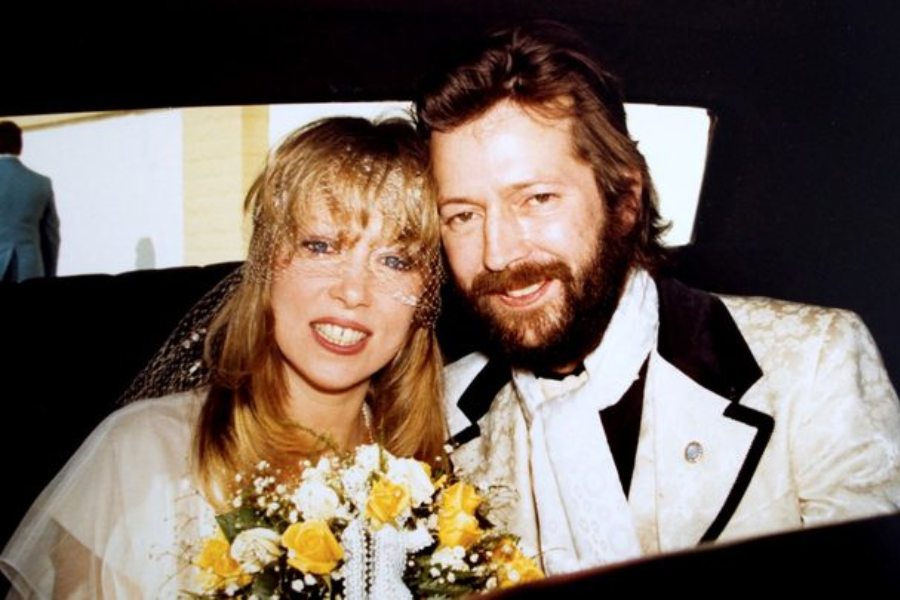
They married on March 27, 1979, in Tucson, Arizona. At first, Pattie reveled in Eric’s devotion, believing she had finally found the love and attention George had denied her.
But Eric’s struggles with alcohol, cocaine, and heroin soon resurfaced, fueling violent mood swings and abusive behavior toward Pattie. To cope, she slipped into her own dependency on alcohol.
Their home, once filled with music and laughter, grew tense and unpredictable. What had begun as passion turned suffocating. Pattie realized that love born from obsession carried its own kind of peril.
The Strains of Marriage
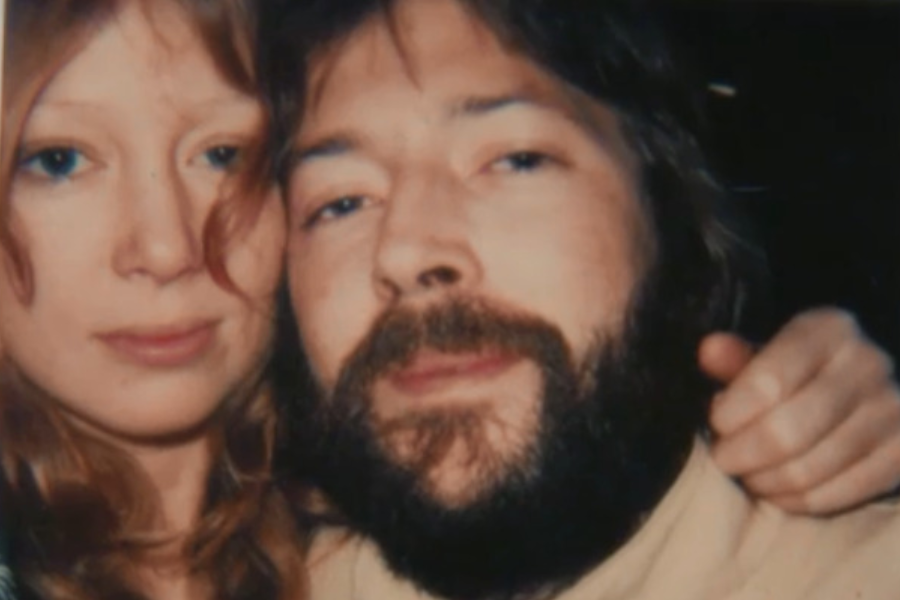
By the early 1980s, Eric and Pattie’s marriage was already fragile. Years of addiction had bred volatility, and even their shared hope for children became another source of heartbreak. IVF treatments ended in failure.
The grief of infertility compounded their fractures, while Eric’s infidelity drove the final wedges. Among his affairs was a relationship with Italian actress Lory Del Santo, which resulted in the birth of his son, Conor Loren, in 1986.
The betrayal was devastating. Pattie ended the relationship in 1987, and after more than a decade of turmoil, their divorce was finalized in 1989. She was left carrying the emotional weight of the love triangle’s aftermath.
Desire, Rivalry, and a Lost Identity
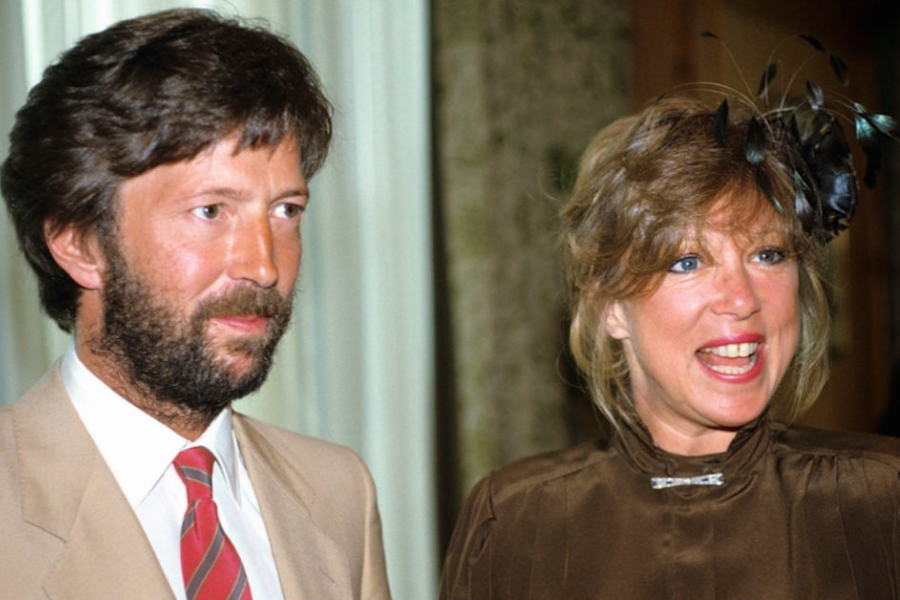
Pattie later reflected that Eric’s pursuit was tangled with rivalry — not solely romantic hunger but a competitive urge. “Eric just wanted what George had,” she believed.
The relentlessness of being coveted by two music legends hollowed her sense of self. She felt observed rather than known, reduced to the prize in their male dramas.
After her second divorce, her self-worth crumbled. “Well, I was no longer ‘Mrs Famous George, or ‘Mrs Famous Eric’ — so who am I? I am no-one,” she confessed. But a woman as strong as Pattie, she knew she shouldn’t let those Rock Gods dim her shine.
Finding Her Own Voice
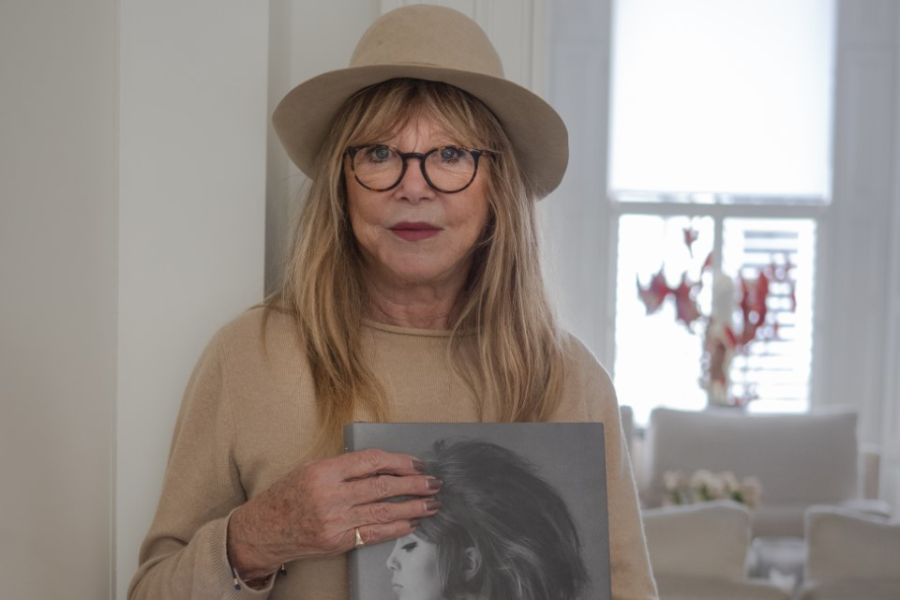
After years defined by being muse, wife, and prize, Pattie Boyd finally sought her own path. “I had forgotten that I even knew how to take photographs,” she said. Photography became her outlet.
Her portraits included intimate images of George, Eric, and the world she had inhabited, but this time told on her terms. The camera offered freedom, a creative space entirely her own.
She was no longer “Mrs. Famous,” she became Pattie: survivor, storyteller, and an artist in her own right. At last, after a long wait, life eventually brought renewal.
Life Beyond George and Eric
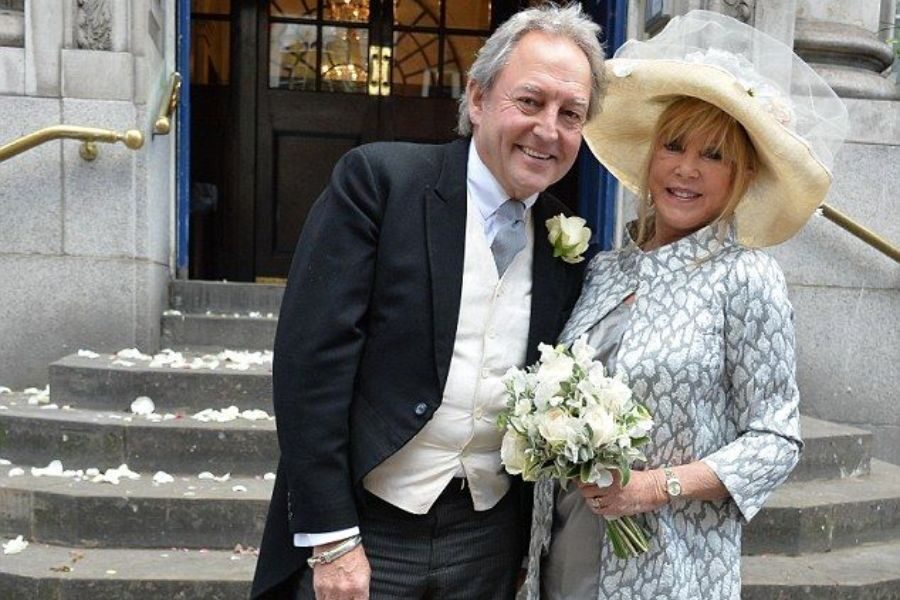
Despite two marriages to rock legends, Pattie Boyd never had children. Failed IVF attempts with Eric deepened her heartbreak, leaving her to grieve the family she had once imagined.
But after years of solitude, she found love again with property developer Rod Weston. They had been companions for 25 years before quietly marrying in 2015.
This union, free from the spotlight of rock stardom, gave Pattie the stability she had long craved. And if she could carve out a new identity beyond the past, what about the two men whose friendship her love had nearly destroyed?
A Friendship Against the Odds
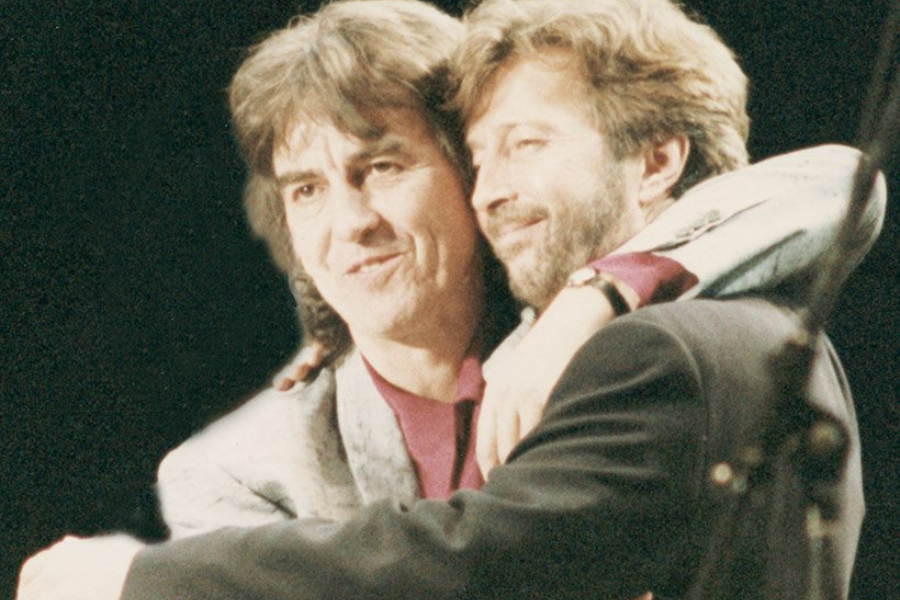
Strangely, George Harrison and Eric Clapton’s friendship endured, even after years of tension over Pattie Boyd. What should have been irreparably broken instead settled into an unusual, lasting bond.
Though Eric had pursued Pattie during her marriage to George, their relationships never truly overlapped. That lack of direct betrayal allowed the men to preserve a fragile respect for one another.
Remarkably, George even attended Eric and Pattie’s wedding in 1979, jokingly calling himself their “husband-in-law,” and saying that he was glad that she was going off with Eric instead of some idiot.
The Gift of Layla
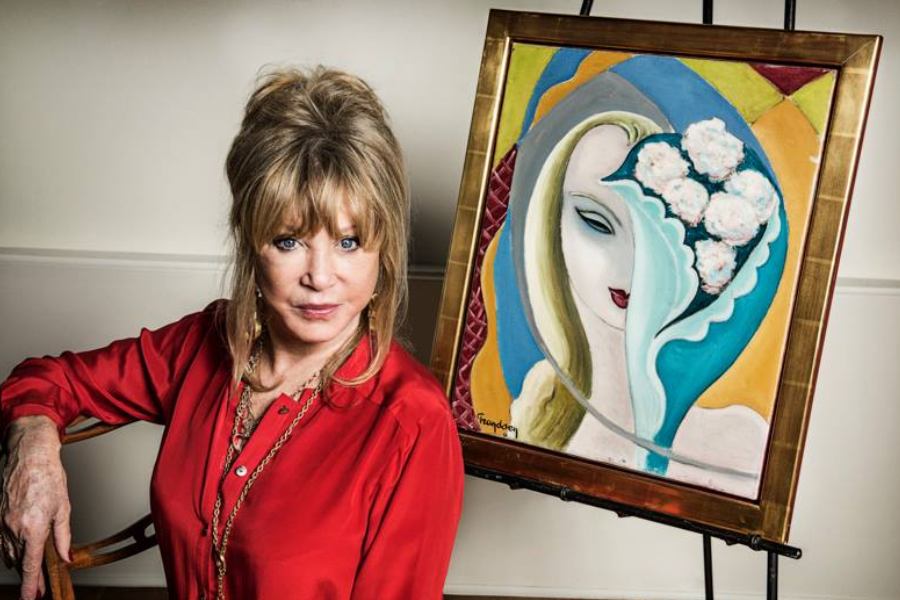
After Pattie and George split, she recalled Eric gave George a remarkable gift — La jeune fille au bouquet by Émile Théodore Frandsen de Schomberg, the painting that had graced the cover of Layla and Other Assorted Love Songs.
The portrait, depicting a blonde woman with flowers in her hair, had captivated Eric when he recorded in the south of France. To him, it embodied the spirit of “Layla” — and Pattie.
Handing it to George was a gesture of compensation, a strange token of respect in the wreckage of their triangle. Music, art, and love remained inextricably entwined. Yet, for Pattie, everything she had within these relationships — she must let go.
The Parting Time
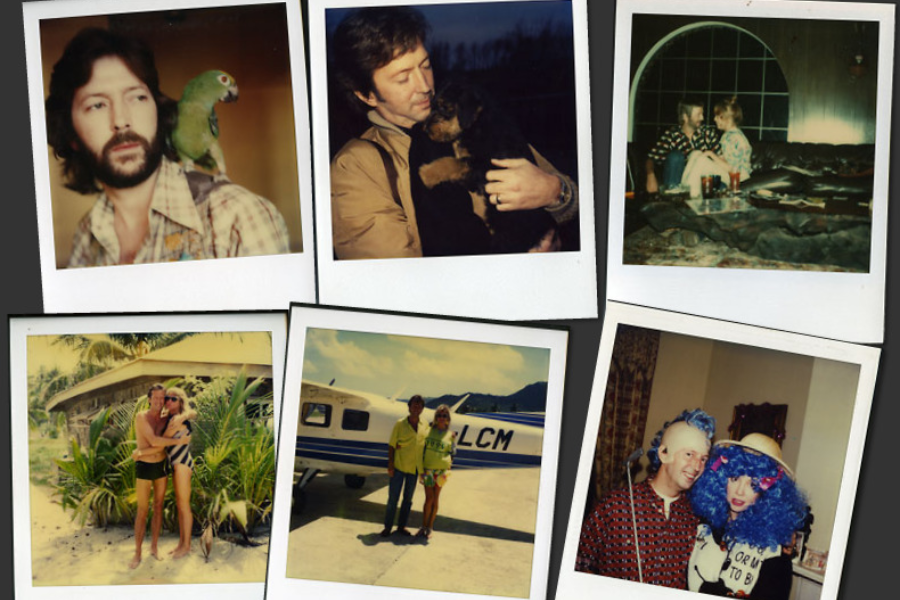
Decades after the turmoil, Pattie Boyd chose to part with the letters, photos, and mementos that had defined her role in rock’s most famous love triangle.
Speaking to Christie’s in London, she explained her decision: “I thought, ‘Do I need them? Do I need to keep going into Pandora’s Box?’ It’s time for others to enjoy them.”
The auction brought in an astonishing $3.6 million, far exceeding expectations. For Pattie, the sale was not about money, but release — a final step in closing the door on a painful past. Being the muse of the greatest rock stars, there was sweetness, and then… there was heartbreak.
The Emotional Cost and Cultural Impact
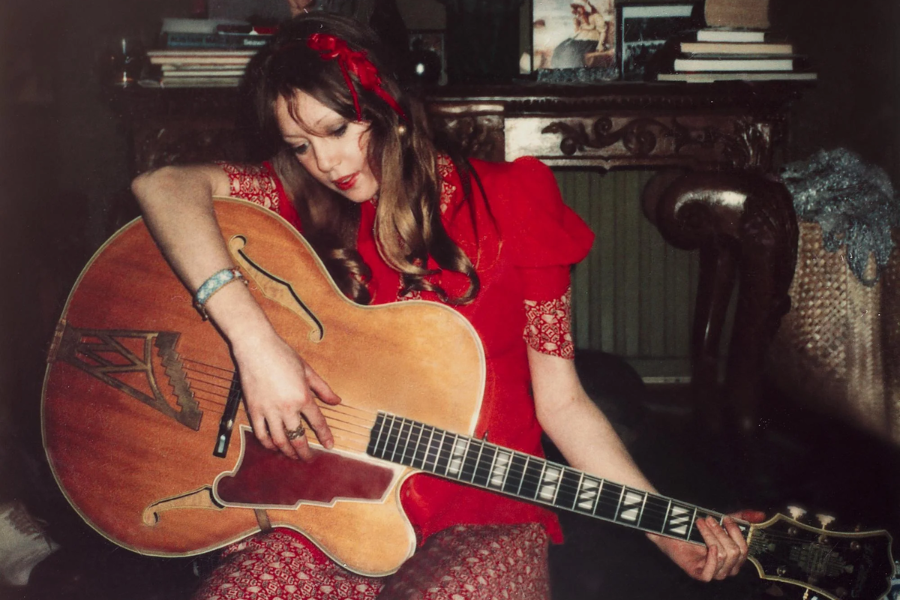
Though immortalized in legendary songs, being a muse came at a heavy price. Pattie Boyd carried the burden of devotion, obsession, and betrayal, her personal suffering often eclipsed by myth.
To the public, she was the golden thread linking George Harrison and Eric Clapton. Yet to herself, she was a woman searching for identity, self-worth, and peace beyond fame’s glare.
“Just because things didn’t work out as we planned, it didn’t diminish our love for each other,” Pattie reflected. Today, her story remains a cautionary tale of love and legacy. The songs remain immortal, but for Pattie Boyd, love was never just melody — it was sacrifice, survival, and the price of being rock’s most famous muse.

